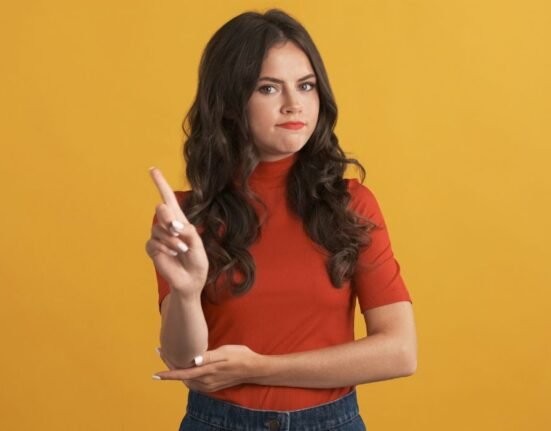As truly said by Michalko, Creativity is something different from intelligence and is a parallel construct to intelligence, but it differs from intelligence in that it is not restricted to cognitive behaviour. Instead, it is concerned with a complex mix of motivational conditions, personality factors, environmental factors, chance factors and even products.
While studying the process of creativity, researchers supposed creativity as an extraordinary result of ordinary processes. The process of creativity includes the following characteristics:
- Imaginative: This includes generating something like ideas, or products out of your creative thinking.
- Purposeful: This includes creating something that serves a purpose.
- Original: This involves creating something novel, unexpected and belonging only to you.
- Valuable: This means it has noticeable value concerning the objective it was used for.
Don’t you find yourself being creative all the time while solving any problem in your life or others? So, will all that be considered under one common roof of creativity? No! There are 4 C’s of Creativity which define creativity given by Arne Dietrich.
- Deliberate and Cognitive Creativity: People with this creativity are highly productive in society. They combine their skills, knowledge and talents to reach the final state of a problem. They invest a lot of their time and energy to get the desired results.
- Deliberate and Emotional Creativity: People with Deliberate and Emotional Creativity are highly sensitive and emotional yet are practical and rational too. They prefer doing things by themselves and have “A-ha moments” which help them achieve their desired goals.
- Spontaneous Cognitive Creativity: This type of creativity depends on the unconscious mind rather than the conscious mind. The solution comes to the person on its own when he indulges in different and unrelated activities. These people wait for their “Eureka moments” by taking a break from that particular problem.
- Spontaneous and Emotional Creativity: This skill cannot be developed. It is related to “Epiphanies” which means sudden realization. This is found in great artists who have their rare moments when they discover something unexpected.
When you talk about problem-solving, the aim of the operator or the person is to remove or overcome the hurdles that come in the way from an original state (initial state of problem) to the goal state (end state of the problem). According to Gestalt psychologists, problem-solving involves the stages of creative thinking as given by Graham Wallas (1926): Preparation, Incubation, Illumination, and Verification. These stages more or less align with the 4 stages of problem-solving given by Polya.
Stage 1: Define the Problem
This stage involves defining or identifying the nature, attribute and type of problem. The problem can be well-defined or ill-defined, problems of inducing structure, transformation, or arrangement. Before looking for alternatives, you need to identify the type of problem.
Well-defined Problems are the ones with defined initial state, goal state, operators, and rules. Ill-defined Problems are the ones with no defined initial state, goal state, operators, and rules. Apart from these, the operator needs to find the link and arrangement between various elements of the problem, and also figure out the sequence of operations to reach the goal state from the initial state.
Stage 2: Devise a plan for Solution
This step involves deep thinking to find different solutions to the problem. Graham Wallas emphasized that the thinker shouldn’t work directly on the problem but let the problem get into his unconscious mind which would even help him to reframe the question.
Stage 3: Execution of the plan
At this stage, the operator is expected to have found new insights into the problem along with several solutions. Now, it’s time to implement the chosen solution.
Stage 4: Evaluation of the results
This is the final and last step of problem solving which focuses on looking back. This involves going through the question, checking on the selected solution, and making some modifications if needed. It’s like proofreading the whole process just to be sure and confident about the decision being made.
Make a Note
Although problem solving involves step-wise decision-making, creatively selecting the solutions, and gathering all the needed information still an operator needs to know that there are certain factors that affect Problem-Solving.
- The size of the problem, difficulty level of the problem, initial state and final state of the problem.
- Difference between the initial and final state of a problem. The greater difference needs more steps to solve a problem as compared to a problem that is frequently experienced by the operator.
- The perceiver’ set which involves the perception of the operator about how to respond to a particular problem has a huge effect on the process of problem solving.
- Functional fixedness refers to the stereotypes about any problem or situation. This can be taken as the mindset that the operator has while he experiences a problem.
You all are already solving your everyday life problems without even noticing that you are doing it. But don’t you think solving a problem creatively will help you boost your confidence, and enthusiasm and feel accountable? It’s better to take charge of your life rather than to criticize it every moment.
Read more article from Psychologs
- Do you Experience Brain Fog?
- The Psychology Behind Creative People
- Anxiety: Symptoms, Causes and Intervention
- Bipolar disorder: Types, symptoms and treatments
- Schizophrenia: What is it, Symptoms and treatments
- Obsessive-compulsive Disorder: Symptoms, Causes and Treatments
- 10 Subtle Signs of Highly Creative People, According to Psychology
References +
- Vandenberg, S. (2021, November 16). The Basics of Creative Problem Solving – CPS – InnovationManagement. InnovationManagement. https://innovationmanagement.se/2010/06/02/the-basics-of-creative-problem-solving-cps/
- What are the Stages of Creativity? (2024, July 5). The Interaction Design Foundation. https://www.interaction-design.org/literature/article/what-are-the-stages-of-creativity
- MindTools | Home. (n.d.). https://www.mindtools.com/pages/article/creative-problem-solving.htm
- The secret to Capital-C creativity is fostering Little-C creativity first. (n.d.). Muse by Clios. https://musebycl.io/musings/secret-capital-c-creativity-fostering-little-c-creativity-first
- Vandenberg, S. (2021b, November 16). The Basics of Creative Problem Solving – CPS – InnovationManagement. InnovationManagement. https://innovationmanagement.se/2010/06/02/the-basics-of-creative-problem-solving-cps/













Leave feedback about this